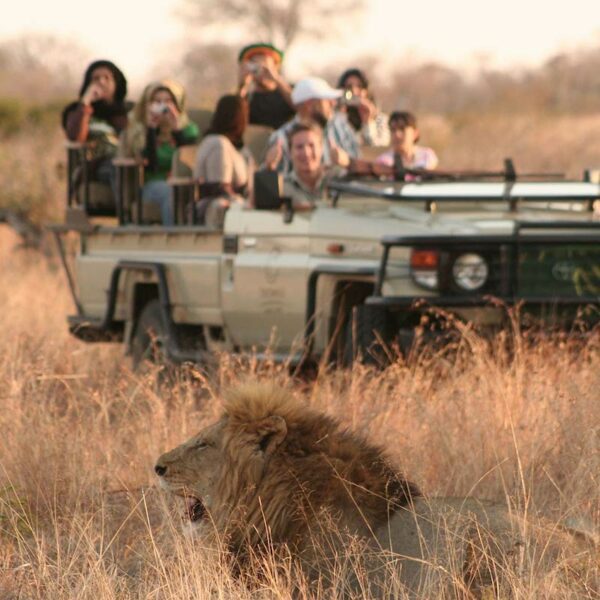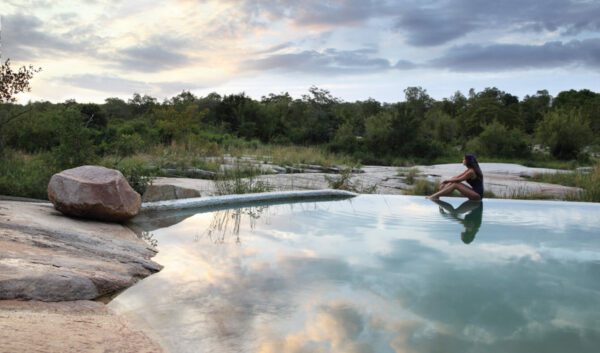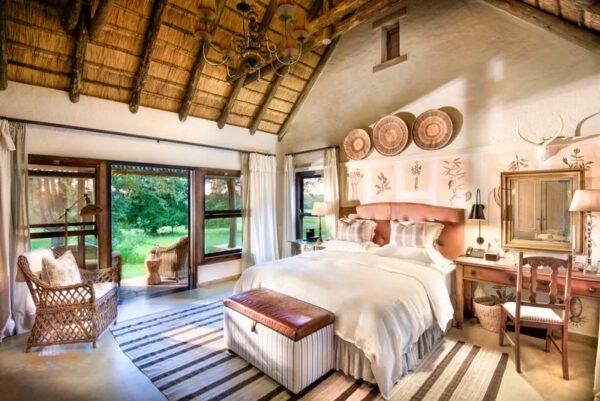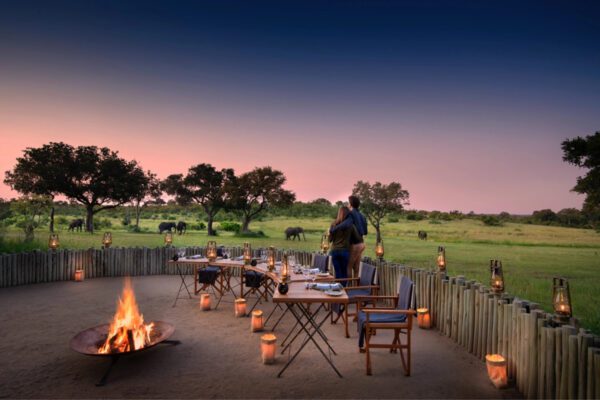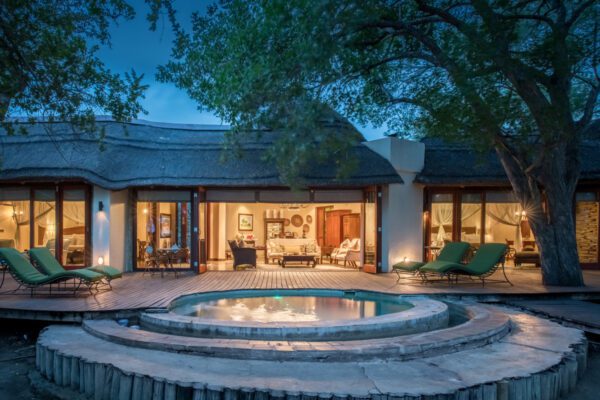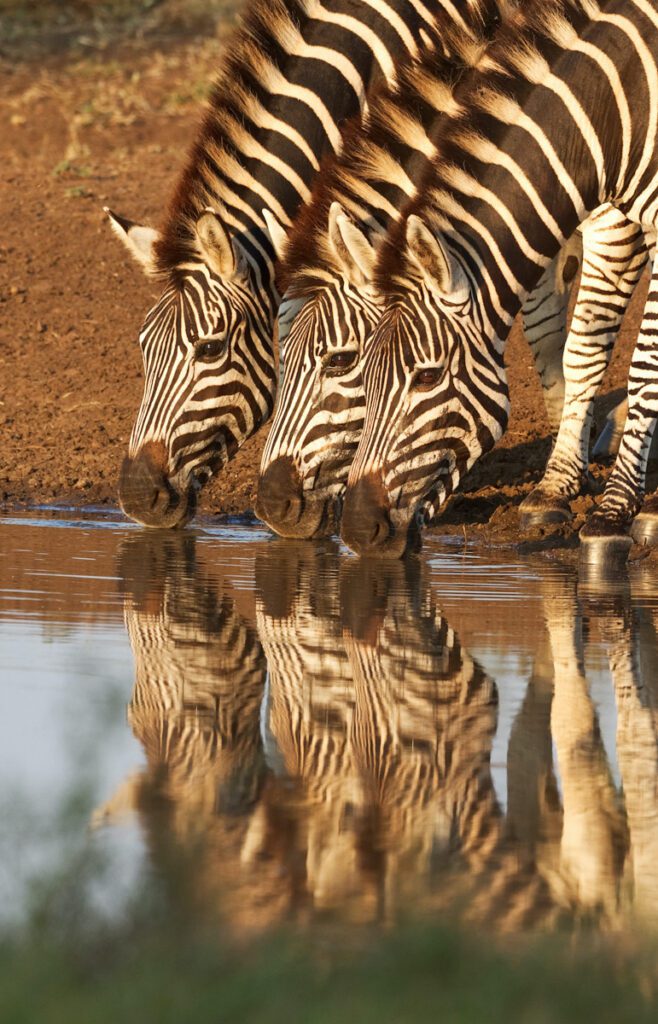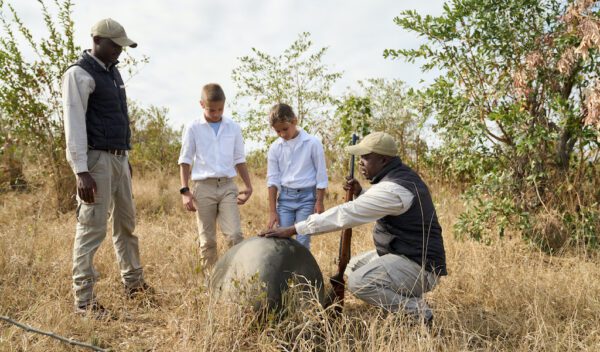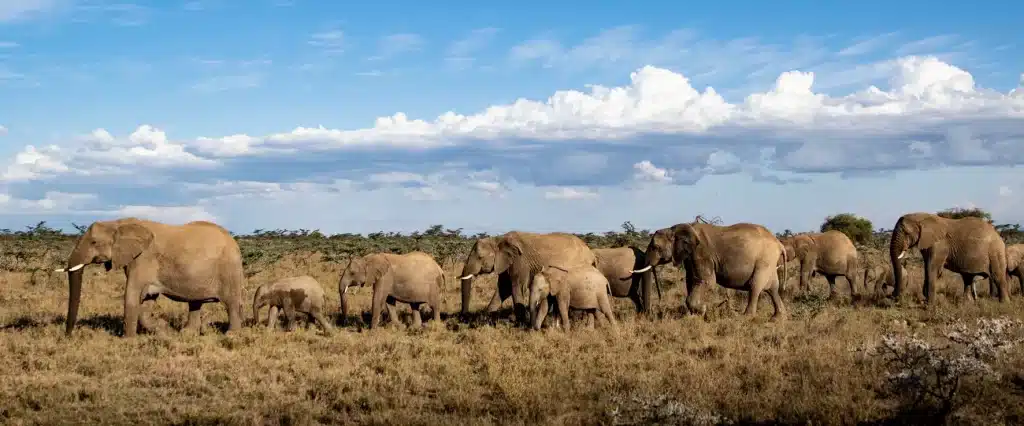BEYOND BORDERS
Discovering the Greater Kruger Region
Perhaps the most renowned of Africa’s parks and reserves, Kruger National Park has an exceptional reputation for safari travel.
Easily accessible and well established, with experienced guides and a diverse range of properties, it is as logistically convenient as it is naturally abundant. A selection of landscapes plays home to almost 900 species of mammals, reptiles, fish and birds.
Covering a staggering 7,700 square miles (20,000km²), Kruger is both the oldest and largest of all African parks and part of the even bigger Great Limpopo Transfrontier Park. Established in 1926, it has gradually expanded to provide habitat for numerous endangered species, including South Africa’s most healthily viable pack of African wild, or painted, dogs. Its history reaches far further than a century, however, with numerous archeological and rock art sites estimated to be as much as a staggering 500,000 years old.
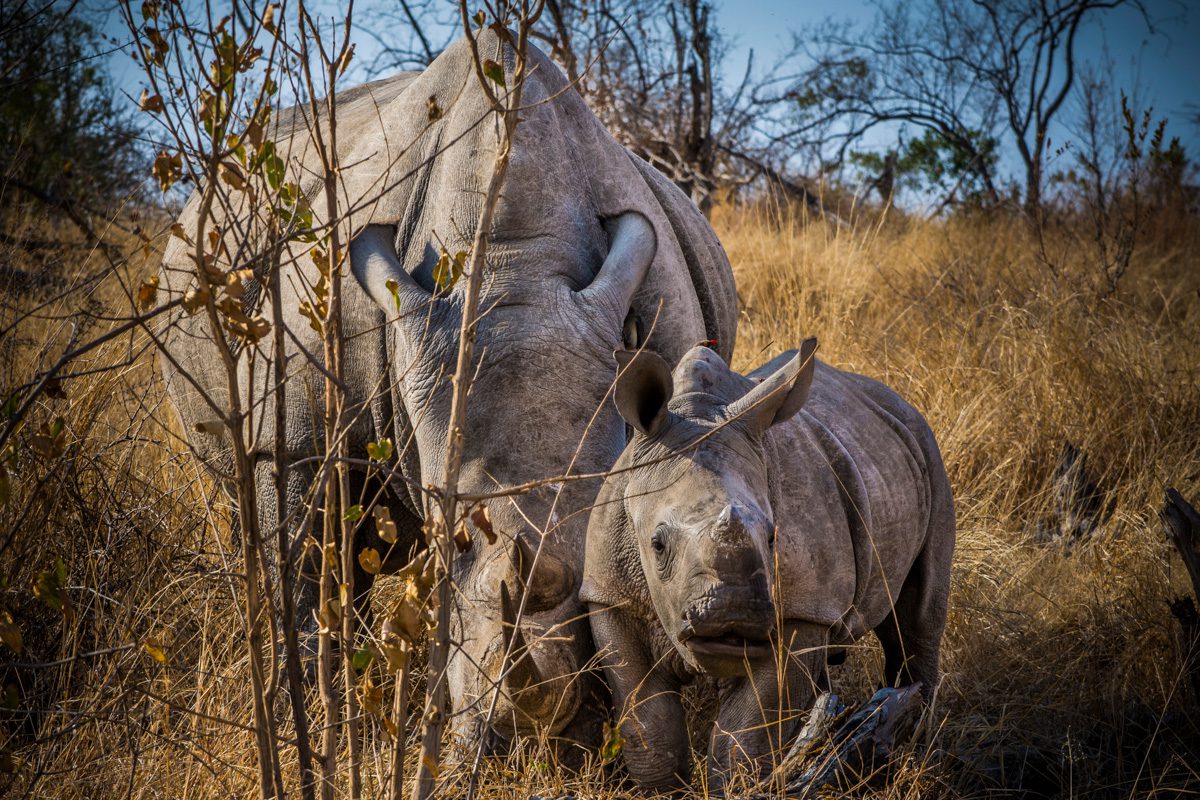
Founded as a no-hunting zone, Kruger continues to be a sanctuary for wildlife, but various loopholes have allowed hunting reserves to border the park. Tragically, this allows trophy hunters to take advantage of the park’s abundance of game. Poaching, too, has been a continual battle for the park. Its sheer scale makes it all but impossible to efficiently monitor wildlife, and while certain endangered animals and vital pockets of land are well protected, poaching is yet to be eradicated, and possibly never will be.
Fortunately, despite these facts, wildlife is flourishing, including both black and white rhino – one of the most heavily poached animals across the continent – and more work is being done, both on a local and governmental level, to further protect the park.
With nearly one million visitors every single year, it is far from a secret or exclusive destination, but its immense size provides enough space to find a certain amount of privacy. Kruger National Park is truly and justifiably iconic, but with its public access and popularity, we tend towards its neighbouring private reserves and conservancies. Mala Mala, Sabi Sands, Timbavati and Manyeleti reserves are just a few of the secluded and exclusive concessions on the periphery of this vast sanctuary of life. These offer personal game drives, luxurious private lodges, intimate camps and impeccable service, while still enjoying the abundance of Kruger’s wildlife population.

With so much to offer, it can be challenging to know where to begin, suffice it to say that our travel designers will carefully select the very best properties and experiences to meet your dreams. This is our beginner’s guide to the fascinating, rewarding and absolutely spectacular Kruger region:
On Kruger’s Periphery
Kruger National Park is bordered by a small collection of privately-owned and managed reserves, but rather than simply being an extension of the park itself, they each offer their own distinct attractions. Of these, four are particularly notable:
SABI SAND GAME RESERVE: Regarded as one of the foremost elite private concessions in Africa, Sabi Sand comprises several privately-owned concessions offering superb game viewing and some of the most innovative and luxurious private properties. Londolozi, Singita, Dulini and several of the leading names in luxury safari lodges all reside within the larger Sabi Sand reserve. It is also regarded as one of the finest destinations to view cheetah, and there is a certain ease in the wildlife in Sabi Sand that is rarely found elsewhere.
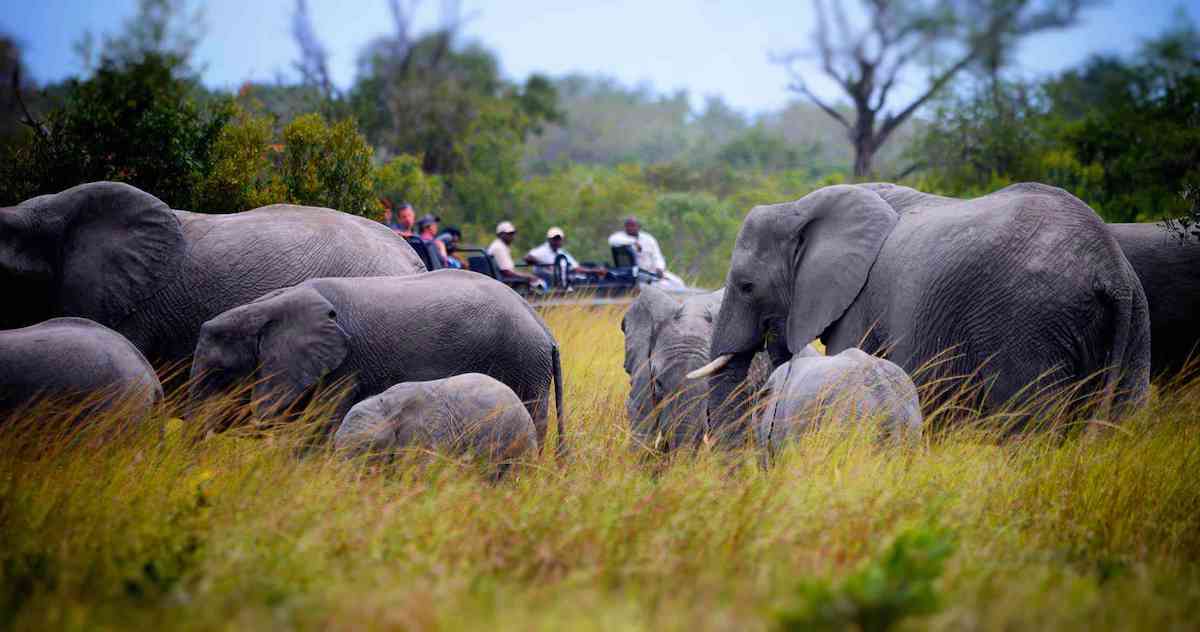
Though not intentionally habituated, they have been afforded – through their safety and protection – a certain air of complacency around humans. While you thankfully might not be able to cuddle up to a cheetah or pet an elephant, animals have become familiar with passing game vehicles, in particular the usually elusive leopard population, making Sabi Sand one of the best locations to observe these two polkadot predators.
TIMBAVATI PRIVATE NATURE RESERVE: Located on Krugers’ northwestern border, Timbavati contains a drier landscape, and this brings its own unique collection of wild occupants. Its name translates as ‘the place where something sacred came down to Earth from the Heavens’, referring to the rare white lions that reside here. White rhino, elephant and giraffe share their habitat with aardvarks, pangolin and other creatures rarely found on lush, grassy terrain.
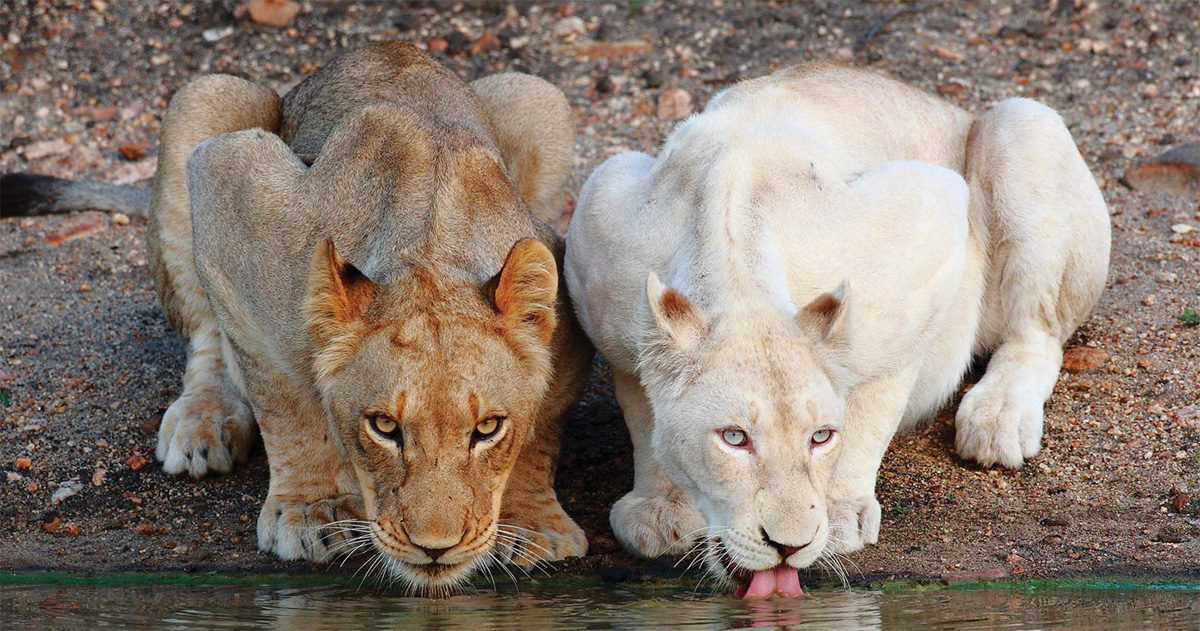
MALAMALA GAME RESERVE: With the Sand River flowing across its western boundary, game viewing is particularly plentiful in MalaMala, wildlife attracted by this almost perennial water supply. The Kruger region regularly endures extended droughts, but the Sand River is one of the last drinking sources to dry up. MalaMala is recognised as one of the most prolific places to view the Big Five; the Cape buffalo, black rhino, elephant, leopard and lion.

MANYELETI GAME RESERVE: With its open borders, wildlife is able to wander through Manyaleti, making game viewing wonderfully varied and changeable. On one day, you may see elephant, giraffe and zebra, while the next day might be a bonanza of big cats or even some African wild dogs. Quieter and with a smaller human population, Manyeleti provides uncompromising serenity, in camp, on drives and throughout one’s visit. Game viewing remains both highly appealing and abundant, but its exclusivity is Manyeleti’s strongest asset.
All Images: © Manyeleti Game Reserve
Where to Stay in the Kruger
Kruger itself has over 20 properties to choose from across several locations. Though a handful of these cater to a more bespoke, premium level of safari itinerary, many have been established for versatility, suitable for a variety of clients. With our unparalleled level of quality and luxury, we focus instead on the plentiful selection of properties in the park’s surrounding reserves:
LONDOLOZI GRANITE SUITES
📍 Londolozi Game Reserve
Londolozi Granite Suites are the perfect safari lodge dream manifested. The intimate private suites overlook the gently flowing Sand River, welcoming elephant, leopard and myriad birdlife to this vital water source. From one’s balcony, it is possible to soak in a bath tub or private plunge pool, watching nature at peace and young elephant calves joining the herd to drink from the water’s edge.
CASTLETON
📍 Sabi Sand
Modelled on a classically traditional homestead, Castleton is a private, six-suite property overlooking tranquil lawns and a busy waterhole frequented by game. With its own gymnasium, spa room, tennis court, swimming pool and private boma, the impeccably designed property is home away from home for up to 12 guests. A personal staff caters to every whim, from massages and meals to game drives and activities for all ages. This exceptional lodge takes advantage of its 45,000-acre private reserve, with both day and night game drives, walking safaris and unparalleled photographic opportunities. A particularly fascinating activity is to join the anti-poaching canine unit on patrol, helping to protect the more vulnerable creatures of Sabi Sand.
ROYAL MALEWANE
📍 Timbavati
Royal Malewane is the perfect marriage of classic, colonial bush style and timeless luxury. The selection of lodges each indulge guests in lavish surroundings, with deep, padded armchairs gathered around roaring open fires for the cool nights, pendulous chandeliers strung from the high timber ceilings and intimate dining tables replete with full cutlery and dishware worthy of any fine-dining restaurant. With elephant greeting you at your private lap pool, open-air baths, on-site spa and much more, this is the discerning safari traveller’s choice.
CHEETAH PLAINS
📍 Sabi Sand
A luxurious contemporary property, Cheetah Plains offers a handful of private villas, some also with additional suites, to cater for groups of up to eight people. Exceptional big cat viewing and fertile landscapes have given Cheetah Plains a superb reputation, and so too has its unwavering devotion to conservation and sustainability. The entire property is self-sufficient, with its own solar farm, electric game vehicles, organic kitchen garden and grey water system. Guests intrigued by these measures can take guided tours across the property. Cheetah Plains also recognises the need to support local communities and is closely involved in outreach and support programs, including the partnership with and commitment to the Lezagwa Utah Crèche initiative, caring for children between 6 months and 5 years.


TINTSWALO
Manyeleti
Tintswalo’s Baines Presidential Suite is particularly well-suited to families, though can equally accommodate two couples. The classically elegant interior is creatively cocooned in a traditionally-styled cottage, the thatched rooves woven atop raw stone walls, creating a rustic authenticity to complement the boundless luxury. A private pool and boma and exclusive team of staff – including chef, butler and guide – create a certain decadence to one’s stay. A private game vehicle allows guests to choose precisely where, when and for how long their optional daily game drives occur and this can be beneficial for younger families with shorter windows of attention, or for those wishing for a specific experience, such as birding, seeking out the Big Five or taking a photographic safari.
Kruger Wildlife
Though leopard sightings are somewhat rare in Kruger National Park, they are present, making Kruger a fairly certain Big Five destination. However, rather than eagerly pursuing these five animals alone, one should take the time to appreciate all life, on the ground and in the air.
Cheetah, wildebeest, hippo and giraffe all wander the bushland, and on rare occasions, wild dogs can be found. Though healthy in numbers, they tend to inhabit the less frequented regions, making them devilishly hard to find.
Numerous antelope species also inhabit the region, and visitors can often observe impala, greater kudu and waterbuck, with the more elusive steenbok and common duiker also making occasional appearances.
The much admired lilac-breasted roller and white-fronted bee eater cast rainbows of vibrant colour across the sky as they chase flying insects, and the southern ground hornbill and saddle-billed stork create intrigue at ground level.
Raptors also reside in the Kruger region, including several vulture species, the common bateleur (below), tawny and martial eagles, and the spectacular Pel’s fishing owl.
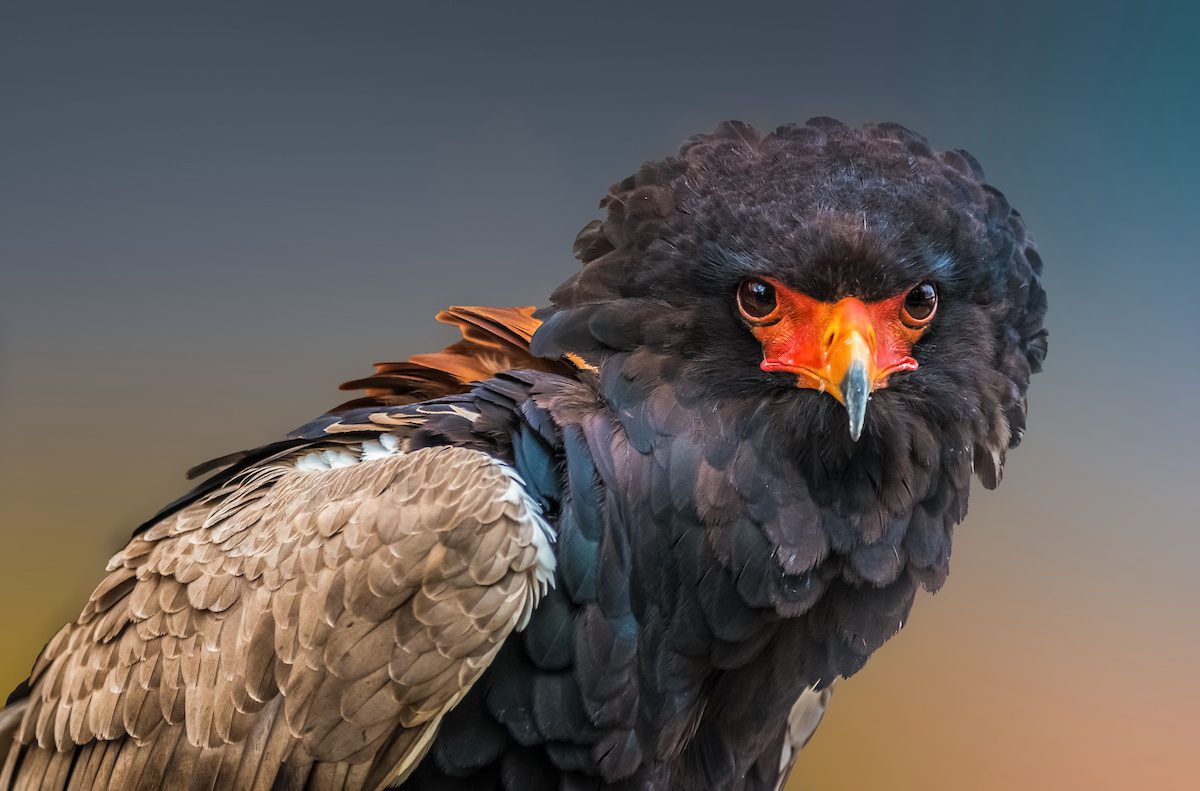
Beyond the park’s boundaries, other wildlife can be found, including honey badgers, caracals and pangolins, but the unique appeal here lies beyond sunset. As a National Park, Kruger has strict opening hours, its 5:30pm curfew making it all but impossible to explore the park at night. Private concessions and reserves lack these constraints, the nocturnal world becoming accessible to guests on a night drive. Under a spectacular star-studded sky and with the assistance of experienced spotters and a carefully trained spotlight it is possible to see aardvarks, civets, porcupines and the wide, glowing eyes of bush babies.
Activities in the Kruger Region
Animal viewing is, of course, the primary attraction of the Kruger region. So abundant is its wildlife that it is impossible not to be in awe of Africa’s myriad creatures in their natural habitat. This is particularly beneficial for photographers of all levels, and a specific focus has been placed upon finding the best locations and sights, and providing a host of facilities, from editing suites to secure camera mounts on vehicles.
Night drives in private concessions elevate this experience into another dimension, that of heightened senses, nocturnal creatures and an acute appreciation for the smells and sounds, beyond the sights.
In some select areas walking safaris are also possible, bringing one’s focus to the ground beneath your feet; the tracks and signs of life, the insects, small reptiles and mammals, and the flora.
Many camps and lodges have a suite of facilities, including spas, pools and fitness centres, helping guests to indulge and unwind. Several properties also offer more interactive experiences that can include tours of kitchen gardens, cooking classes and wine tastings.
Almost intrinsic to private reserves is their appreciation of sustainability and community. Many take great responsibility for the environment and villagers within their boundaries, and this too is something that curious visitors may witness and partake in. Learning about sustainable practices within camp or visiting schools and villages to donate, contribute or simply observe crafts, activities and daily life all help to further the work undertaken by these properties.
For swingers of the iron and wood, four golf courses are located in and around Kruger National Park, each with clubs available for rent and fairways offering some of the most spectacular views of any course in the world.

On game drives, the focus is, understandably, upon the wildlife, but the Kruger region also presents some striking landscapes to explore. This is best done by boat, winding through the Blyde Canyon, champagne in hand as you meander through the towering mountain range, or from above on a private helicopter excursion, instigating the greatest appreciation for the scale and diversity of the region.
For amateur anthropologists, the Kruger also has several hundred locations of archeological importance. Thought to have been created by the San people, an array of rock art created between 1,500 and 3,000 years ago depicts human and animal forms. Numerous other sites have revealed buildings and artifacts that are hundreds of years old, and even some signs of life that could possibly be amongst the earliest signs of civilisation.
Kruger is especially good for younger children and family safaris. The park itself has the benefit of distinct roads and tracks, and both camps and guides are well-practised in keeping younger guests entertained. Likewise, camps both within the national park and its surrounding reserves frequently provide properties specifically designed to accommodate families. Several of the properties beyond the national park have also implemented specific kids’ programs. Educational, fun and entertaining, these not only delight their young guests but also allow parents and guardians some indulgent rest time to enjoy a spa treatment, drinks by the pool or simply a little peace and quiet.
All Images: © Cheetah Plains
Kruger National Park is no remote secret, and yet it still offers some of the most superb safari experiences. Venture beyond the park’s official border and this increases exponentially, the private concessions bringing more wildlife, greater luxury, heightened intimacy and a bespoke experience away from the herds of visitors.
There are numerous locations across the African continent that present their own uniqueness and unmatchable appeal. Kruger may not be able to match the deserts of Namibia, the dramatic waterways of the Zambezi River or Okavango Delta, the rugged coastal vistas of the southern Cape or the expansive plains of Tanzania and Kenya. Yet while similar creatures can be seen and safari experiences enjoyed, there is something distinctive about the Kruger region. Perhaps it is in the denser, taller foliage, its variegated hues in greens and golds, the abundance of nature or the continually changing landscape. Whatever it is that sets the Kruger region apart from so many other destinations, it cannot be conveyed in words or images, or even in film; it must be seen and touched and heard and smelled for oneself.
Let us take you to the Kruger region – contact your travel designer today.

